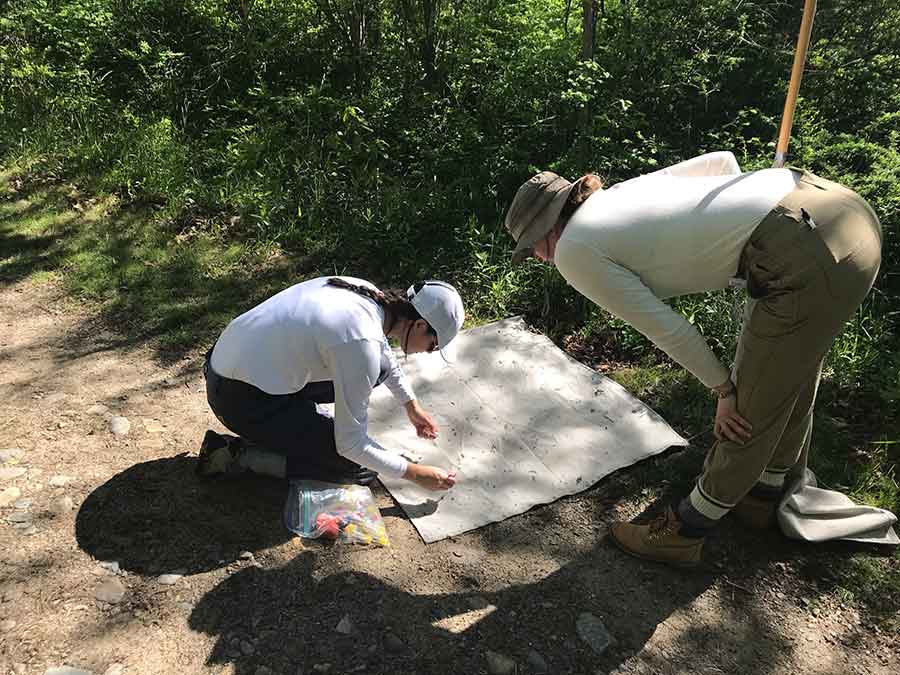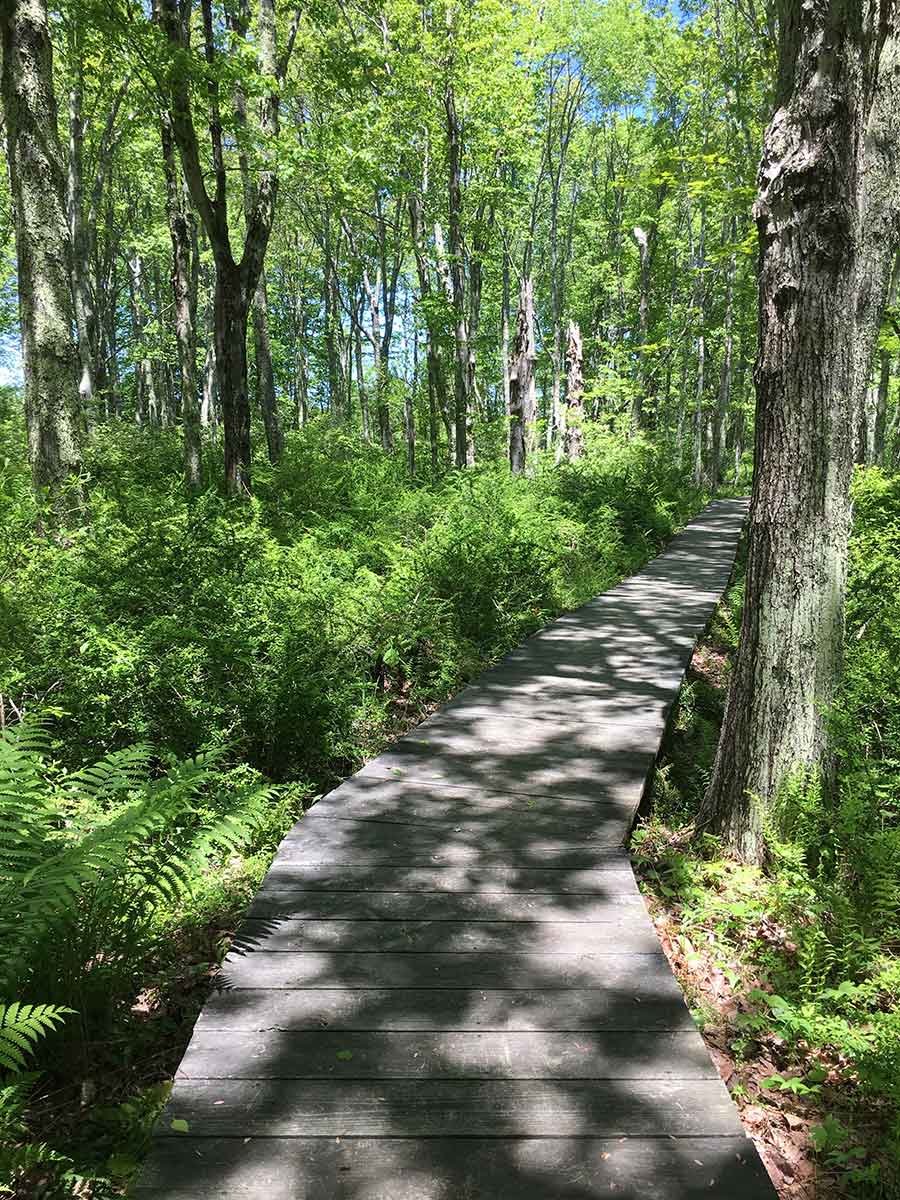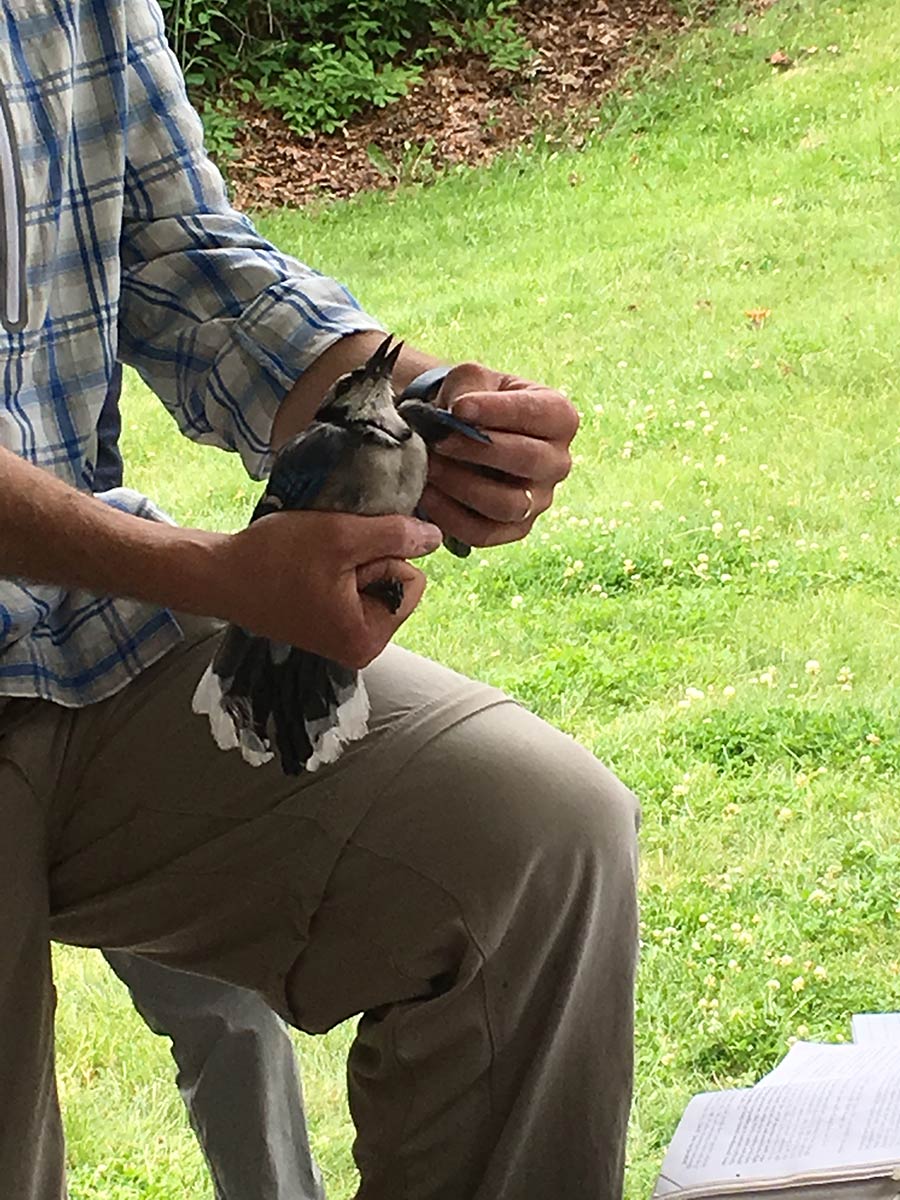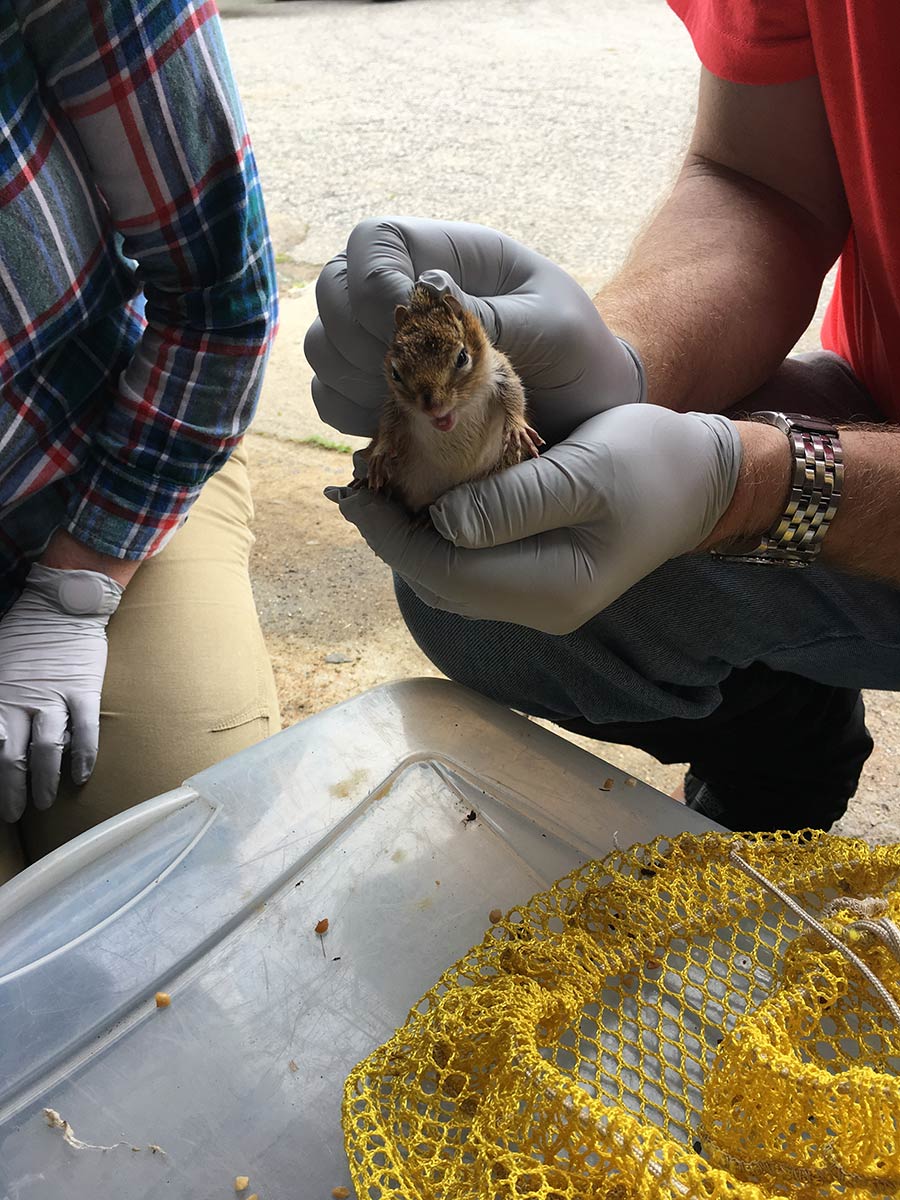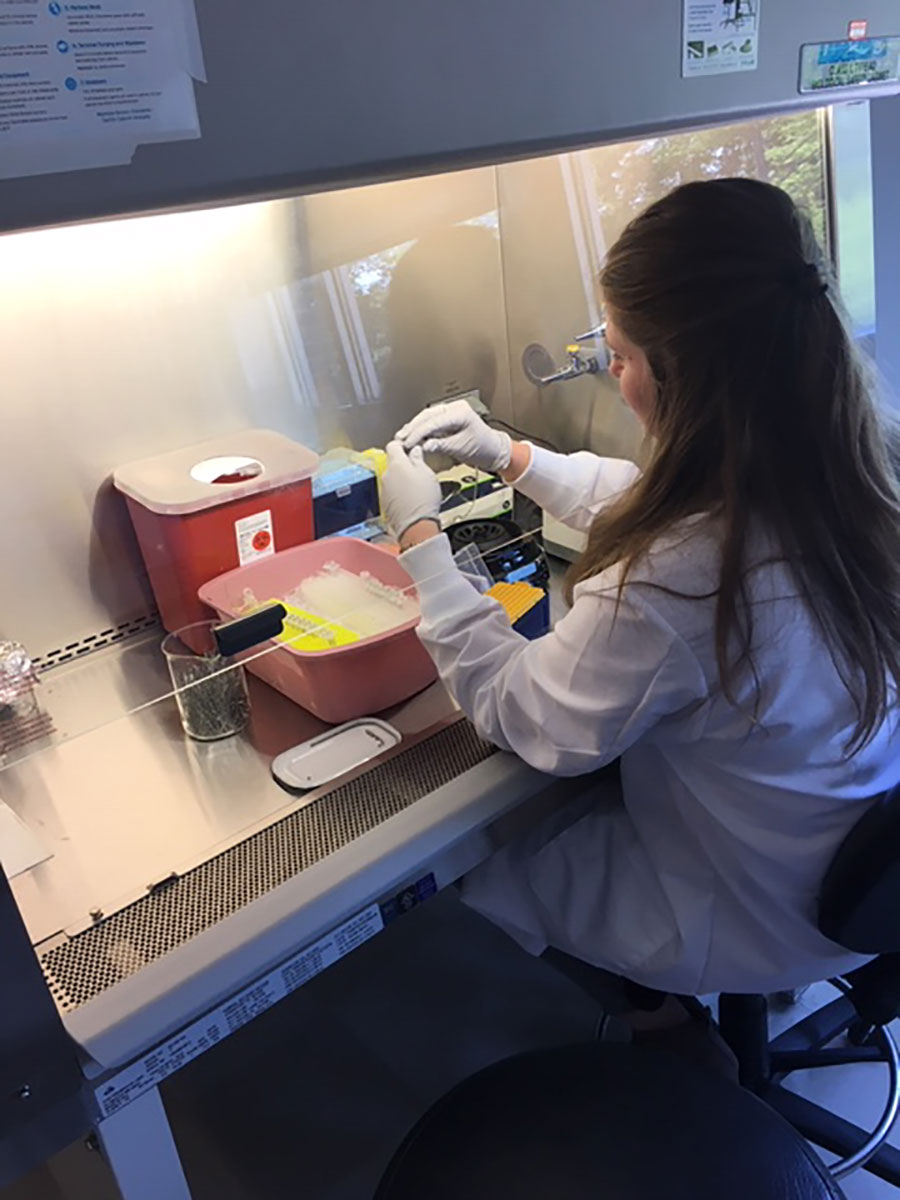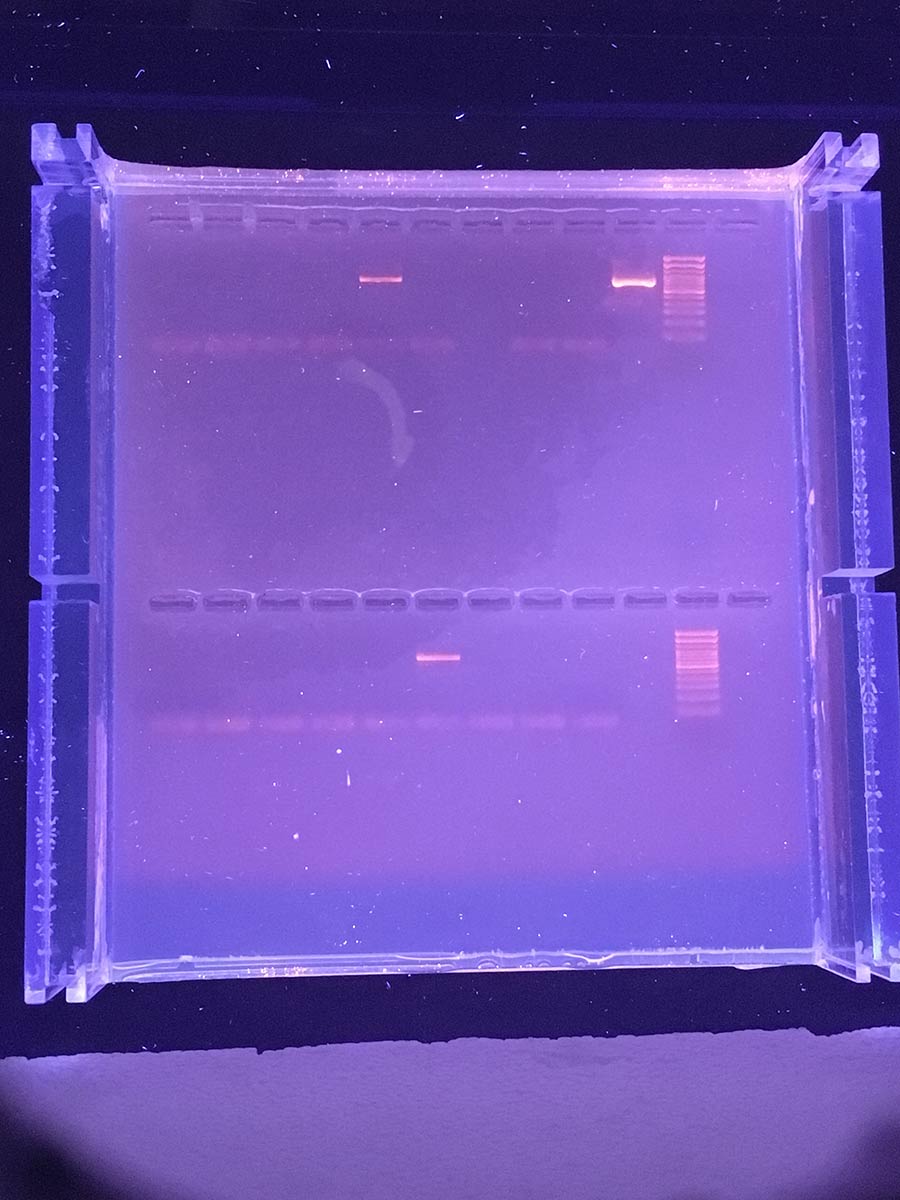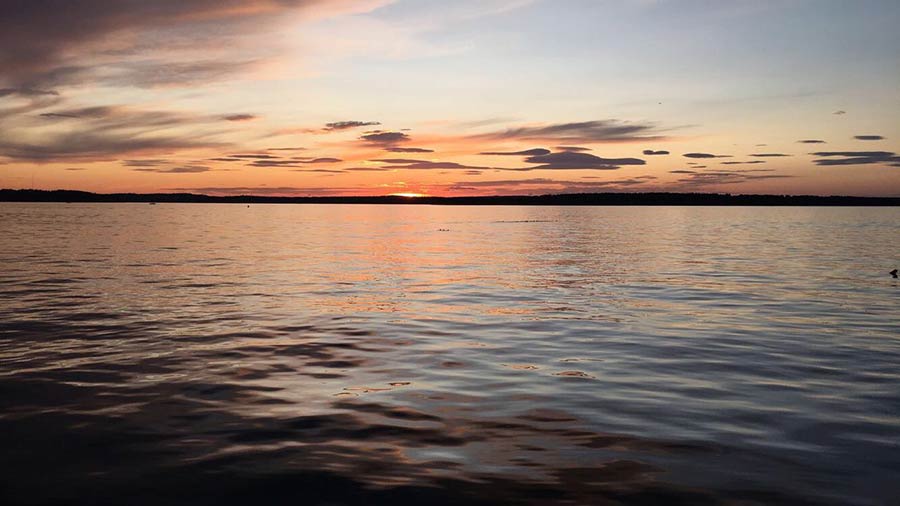Alumni Profiles
Amanda Waugh
Class of 2020
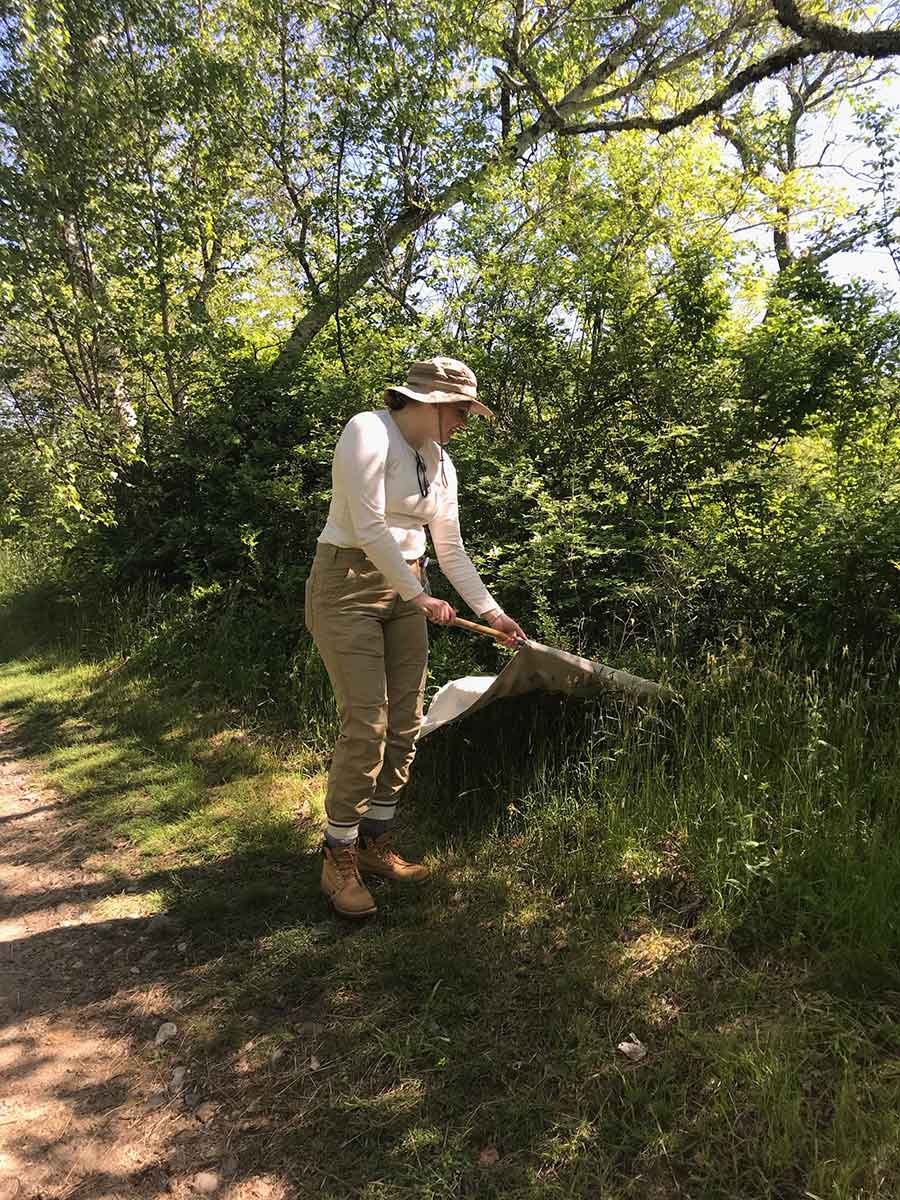
My environmental humanities studies helped me focus and redefine my interest in infectious disease, particularly disease ecology. I am pursuing a dual degree in microbiology and English (language, media, and communications) as well as a minor in the environmental humanities which all come together for me in the idea of One-Health: A public health ideology that human health, environmental health, and animal health are all inextricably related, and one of the ways this manifests is through infectious disease.
This summer, I took a position at Maine Medical Center Research Institute in Portland, Maine, working in their vector-borne disease lab. It was everything I could have hoped for! I worked with a partner on a One-Health focused project looking at where the tick-borne virus Powassan virus exists in nature. It’s a rare and weird virus that is not equally distributed in the environment, but exists in small hot-spots, making it difficult to isolate. I did field work, going out into the woods and collecting ticks from different environments (woods, fields, birds, chipmunks…), as well as lab work, isolating the RNA from said ticks and testing for Powassan. We hoped that we could identify the hotspots where it existed and analyze what environmental factors created this ideal niche for the viral propagation.
We found the virus concentrated in forest habitats with invasive plant species, which was really validating for me, personally, as I am so interested in and concerned with how our interactions with the environment contribute to the spread of disease. This experience reaffirmed my passion for disease ecology and pursuing a deeper understanding of how our relationship with the environment affects human, animal, and environmental health. Not to mention, Maine in the summer is probably one of the best places to be. I absolutely loved it.
